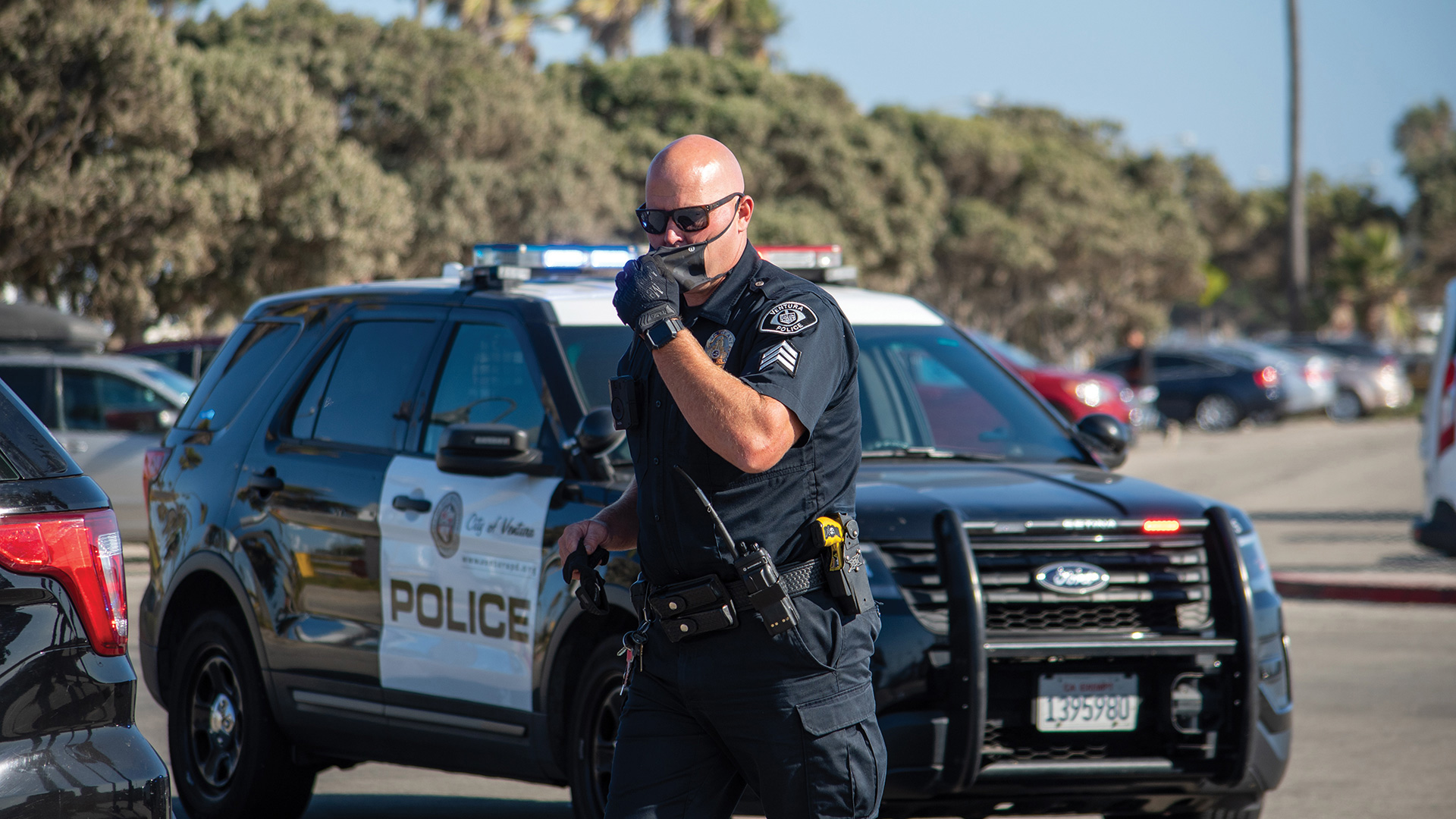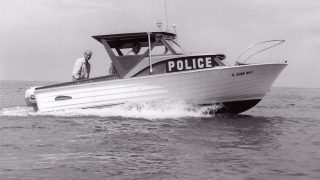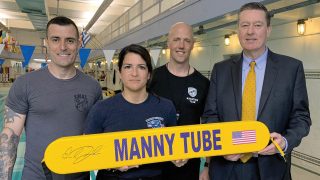
Searching a vehicle should be done the same way every time. Especially in the age of body cameras, you do not want to find 10 kilos of cocaine under the center console and have the defense attorney claim you did anything different in an attempt to suppress the drugs. How often do you check under the center console? In addition to the regular map pockets, glove box, trunk, center console and under seats, what are you searching?
The easiest way to ensure that you are performing vehicle searches in the same way is to simply search the same areas, in the same order, on the same types of vehicles. It is not overly important what the order is; however, it should flow. I always start at the driver’s-side door and work my way counterclockwise. I start at the front of the dash, near where the VIN plate is located, and work my way inward and backward. Once I complete my search, I have searched the headliner, top, bottom and sides of the dash, center console, floor and seat. I then move on to the area behind the driver’s seat and work my way back to the rear of the car. Once I have completed my search of the rear of the car, I move my way back up the passenger side and end at the engine compartment, near the left fender.
During this initial search, you should be lightly tugging on, pushing and pulling every piece of the vehicle. You should be checking to see if the headliner is sagging, if the interior panels are loose or wobbly and if the carpet is loosely tucked under interior panels. You should also take a good, hard look at the glove box. Most vehicles have a sizeable void located behind the glove box that can be accessed by simply pushing the sides of the glove box in, pushing the tabs out of the way. You should also be taking mental notes and learning everything you can about the particular year, make and model of the vehicle you are searching. If you search 20 of any given vehicle and take good mental notes, you will notice something is different with the 21st.
After I have completed my initial search, I will then search the vehicle a second time. On this second pass, I have already seen the entire vehicle one time. This second pass affords me the opportunity to take a second look. On this second pass, your brain has already taken in the majority of the available information. This allows you to key in on smaller details. I will also reach over and search across the vehicle during this second look. Searching across the vehicle on the second pass allows you to see things from all sides. There are a great deal of angles inside vehicles, which often make it difficult to see things from different perspectives.
During this secondary search, I will also dig a little deeper. For this phase of the search, it helps to have a small prying tool to assist in the search. Anything from a flathead screwdriver to a pocketknife can be used, but I find I get the most leverage, while minimizing potential damage to the vehicle, with an upholstery tool. The “door upholstery tool” seems to work the best for slightly prying panels back to check voids. They can be found at most auto parts stores; Napa has one listed on its website under part number BK 7769160 for $5.99.
The secondary search will follow the same order as the initial search. It should have the same start and end points and flow in the same manner as the initial search. I start in the driver’s area of the passenger compartment and begin to work forward to back, outward to inward, then counterclockwise again. When looking at the dash, I will shine my light into the vents and pop the panels off the side of the dash using my door upholstery tool. I will also use it to check the seams anywhere panels are placed and/or meet. I will check the seam where the door panels meet the window and lock controls. I will check between the door panels and the doors, the seat belts and the molding along the floor. I will push the bottom of the seat to the top of the seat, with one hand on each side. Compressing the seat bottom from both sides will make it much easier to detect an anomaly.

When I move to the area behind the driver’s seat, I make sure I check the back of the seats. There is a very large natural void in the seat backs of most motor vehicles. Slightly prying back the plastic insert and shining your light into the void is very easy and will allow you to see the entire void. The other area to pay special attention to in the back seat is the armrest, if possible. Some armrests will have a top- or side-opening compartment, and others offer trunk access when the armrest is in the down position. It is not uncommon for vehicles to be modified with a false wall in the trunk, creating a void that is accessed through the armrest.
The setup of the trunk or cargo area can be widely varied, making it difficult to give one-size-fits-all tips. However, if there is a tool area or spare tire space, check under them. Check the hardware that holds them in. Are the tools installed cleanly? Is there excessive wear from them being taken in and out often? Be sure to check the upholstery on the trunk lid, and be doubly sure to check the panel on the inside of the tailgate on sport utility vehicles. The hydraulic lifts make it next to impossible to detect the extra weight from contraband.
When searching under the hood, pay extra attention to the natural voids along the firewall, especially in vehicles that offer access to the cabin air filter from the engine compartment. There are also decent-sized voids in the air intake box, near strut towers and behind the front bumper. It is important to check behind and all around the headlights, radiator and bumper cover. It is also important to check the hood itself. There is a lining that is usually held in with pop rivets, similar to the trunk lid and other interior panels. Especially with the hood open, this can be done by simply tapping the lining and feeling while listening for a different feel or sound.
While searching every area of the vehicle, during both the initial and secondary search, you should be looking for things that don’t belong. One of the most common things you will see is either mismatched fasteners or fasteners with tool markings on them. Auto manufacturers will use the same fasteners for the same parts. They will not have seat brackets installed with three hex head bolts and one Torx. That would be a sign of the bracket being removed and reinstalled. Tool markings on the fasteners are also signs of the parts being removed and reinstalled. Another odd thing you may find is wiring that just does not look right. Manufacturers’ wiring will be in harness and will always be neat and organized. Aftermarket wiring will almost always stand out once you learn what stock manufacturers’ wiring looks like. Although aftermarket wiring could be installed for a sound system or other aftermarket accessory, it could also operate a “trap” or hidden compartment. When you see these indicators, pay special attention to them, ask questions and ask yourself questions. Depending on your reason for the search, what you are searching for and what jurisdiction you are in, this may mean it is time for a warrant.
These methods will help you locate contraband in both natural voids and hidden compartments or “traps” in vehicles. It is important to remember that natural voids are present when the vehicle leaves the manufacturer. The vehicle has not been altered in any way. The mere presence of contraband in the natural void does not make it a hidden compartment. When referring to hidden compartments or “traps,” the vehicle must be altered from its original configuration to conceal the presence of the contraband that was located within. Either way, “trap” or natural void, if you start utilizing this method or take parts from it and make it your own, you are undoubtedly going to start having more productive vehicle searches.
Dan Kickert is a police officer in the south suburbs of Chicago, with 15 years of experience. He is currently assigned to patrol and training. He serves his agency as a field training officer, range master, tactics instructor and training coordinator. He was previously assigned to investigations, where he worked as a homicide investigator in a task force setting for seven years.
Lauren Sheehan spent four years with the Olympia Fields Police Department before going to work as a deputy sheriff in a collar county of Chicago. She has an M.S. in Criminal Social Justice from Lewis University in Romeoville, Illinois. She has served as a crisis intervention team officer, accident reconstructionist, juvenile specialist and in firearms training, as well as volunteering to coordinate events such as the National Night Out Against Crime and Cop on Top fundraisers for the Special Olympics of Illinois.
As seen in the January 2022 issue of American Police Beat magazine.
Don’t miss out on another issue today! Click below:





